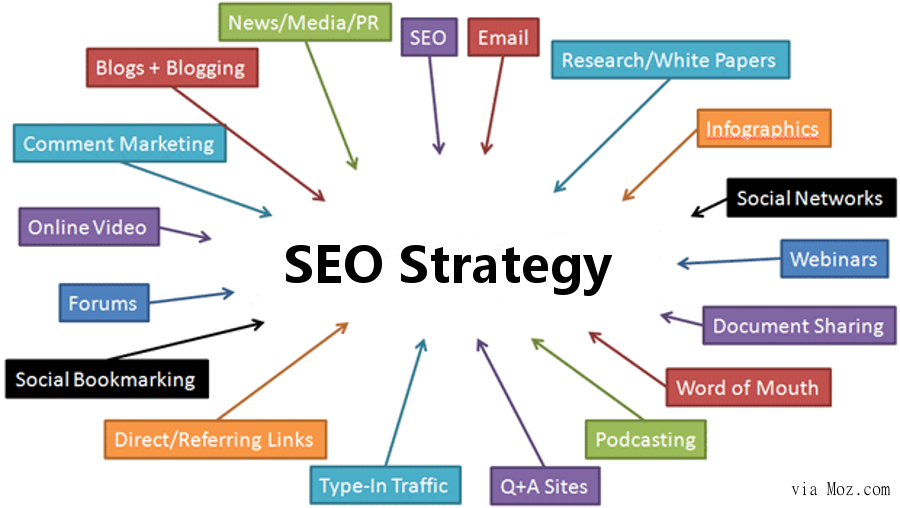
Customers increasingly rely on search engines to discover and interact with businesses, so having a solid online presence and ranking highly in search results can make all the difference in driving targeted traffic, generating leads, and, ultimately, boosting revenue. That's why it's worth adding SEO automation to your marketing strategy.
Yet, the world of SEO is fast-paced, with search engines constantly updating their algorithms and user preferences shifting over time. Staying on top of these changes and executing a comprehensive SEO strategy can be time-consuming for many businesses, particularly those with limited resources or in-house expertise.

This is where search engine optimization automation comes into play, transforming how marketers and SEO professionals approach their optimization efforts. By leveraging specialized tools and software, businesses can streamline their SEO workflows, automate repetitive tasks, and gain insights to make data-driven decisions.
The best part? This automation frees up your time and resources, allowing you to focus on higher-level strategic initiatives.
Understanding SEO Automation
SEO automation is the process of using software and tools to automate various SEO-related tasks that would otherwise be performed manually. These include but are not limited to, keyword research, on-page optimization, backlink analysis, rank tracking, competitor monitoring, and SEO reporting.

The Evolution of SEO and the Role of Automation
During the early stages of search engine optimization, the focus was primarily on implementing basic tactics, such as keyword stuffing and link building, to manipulate search engine rankings. However, the SEO landscape has changed as search algorithms evolved and user experience became a top priority. Nowadays, the focus is more on a holistic and user-centric approach towards SEO.
Successful SEO strategies require a deep understanding of search intent, content quality, technical website optimization, and the strategic alignment of various on-page and off-page factors. This level of complexity has led to the rise of SEO automation, as marketers and SEO professionals seek to streamline their workflows, reduce the risk of human error, and gain valuable insights to inform their decision-making.
How Automation Transforms SEO Tasks
SEO automation tools can handle a wide range of tasks that were previously performed manually, such as:
- Keyword research and analysis: Identifying relevant keywords, understanding search volume and competition, and organizing them into effective content clusters.
- On-page optimization: Automating the optimization of meta tags, headers, content structure, and other on-page elements to better align with search engine requirements.
- Backlink analysis and monitoring: Tracking the growth and quality of a website's backlink profile and identifying potential link-building opportunities.
- Competitor analysis: Monitoring the SEO strategies and performance of competing websites, including their keyword rankings, content, and backlink profiles.
- Rank tracking: Continuously monitoring a website's search engine rankings for specific keywords and detecting any fluctuations or changes.
SEO reporting and analytics: Automating the generation of comprehensive reports on SEO performance, including traffic, conversions, and other key metrics.
The Core Benefits of SEO Automation
SEO automation offers robust advantages that can transform how businesses approach their search engine optimization efforts. By delegating time-consuming, repetitive tasks to intelligent software solutions, organizations can unlock significant improvements in productivity, performance, and strategic focus.

1. Time and Cost Efficiency
Manual SEO tasks can be incredibly time-consuming, especially for businesses with large websites or complex online presences. SEO automation platforms can streamline these processes, allowing teams to complete tasks more efficiently and with fewer resources.
Automating keyword research, content optimization, and technical audits can dramatically reduce the time and effort required to execute these essential SEO workflows.
2. Accuracy and Consistency in SEO Tasks
Automation tools leverage advanced algorithms and access to extensive data sets to provide more precise, data-driven insights and recommendations than manual processes.
AI algorithms can detect nuances and patterns that may be difficult for human analysts to identify, leading to more accurate and data-driven SEO decisions. They are designed to consistently apply best practices and standards, reducing the risk of human error or inconsistencies in tasks such as keyword optimization, metadata management, and technical website audits.
3. Scalability of SEO Strategies
As a business grows, its SEO needs become more complex, and the volume of tasks increases. SEO automation software enables organizations to scale their optimization efforts without proportionally increasing their workforce, making it easier to maintain and improve their search engine visibility over time.
SEO automation enables them to maintain consistent, high-quality output across more content, links, and technical optimizations.
4. Enhanced Analytical Capabilities for Better Decision-Making
AI-powered tools can continuously monitor and optimize SEO performance, adapting to changes in search engine algorithms and user behavior in real-time, without the need for constant manual intervention.
Plus, automation tools often come equipped with robust analytics and reporting capabilities, providing marketers and SEO professionals with a comprehensive view of their website's performance, competitor insights, and opportunities for improvement. This data-driven approach empowers teams to make more informed, data-backed decisions and optimize their strategies accordingly.
5. Freeing Up Resources
By automating routine SEO activities, teams can shift their attention to more strategic initiatives, content creation, and building meaningful relationships with customers and industry partners.
Key Areas of SEO That Can Be Automated
SEO automation can be applied to various tasks, from fundamental keyword research to complex technical audits and performance tracking.
On the content side, tools like Jasper can automate the generation of SEO-optimized meta titles, descriptions, and even entire blog posts, significantly reducing the time and effort required. For on-page optimization, platforms like Surfer can provide real-time recommendations for improving elements like header structure, image alt text, and internal linking.
For technical SEO, crawlers like Screaming Frog can automate identifying and remedying issues like broken links, duplicate content, and indexation problems. Automation also plays a crucial role in link building, with tools that can prospect for relevant backlink opportunities, automate outreach, and monitor the performance of your link profile.
Finally, reporting and analytics can be streamlined through solutions like Looker Studio, which integrates data from various sources to provide a centralized, customizable view of your SEO performance.
1. Keyword Research and Analysis

Identifying the right keywords to target is critical to any SEO strategy. Automation tools like Semrush's Keyword Magic Tool and Surfer's Keyword Research can streamline this process by quickly generating relevant keyword ideas, analyzing search volume and competition, and organizing them into effective content clusters.
2. On-Page SEO Optimization
Optimizing individual web pages for search engines can be time-consuming. Still, tools like Surfer's Content Editor and TextOptimizer can automate optimizing meta tags, headers, content structure, and other on-page elements.
3. Backlink Analysis and Monitoring

Tools like Ahrefs, Semrush, and SEO SpyGlass can significantly simplify tracking a website's backlink profile, identifying potential link-building opportunities, and monitoring for toxic or low-quality links.
4. Competitor Analysis and Monitoring
Understanding the SEO strategies and performance of competing websites is crucial for staying ahead in the search results. Automation tools like SE Ranking and Ahrefs can provide in-depth competitor insights, including keyword rankings, content strategies, and backlink profiles.

5. Rank Tracking
Continuously monitoring a website's search engine rankings for specific keywords can be tedious, but tools like AccuRanker, SERPWoo, and Semrush's Position Tracking can automate this process and provide valuable insights into ranking fluctuations and performance over time.
6. SEO Reporting and Analytics
One key benefit of SEO automation tools is the ability to generate detailed automated SEO reports highlighting improvement areas. Generating comprehensive SEO reports and analyzing website performance data can be time-consuming, so automation tools can streamline this task, allowing marketers to quickly generate and share customized reports with stakeholders.
In-depth Reviews of the Best 5 SEO Automation Tools
The traditional approach to SEO, which relies heavily on manual processes and time-consuming tasks, is no longer sufficient to keep up with the rapid changes in search engine algorithms and user behavior.
When selecting the best SEO automation tools for your business, it's essential to consider factors such as usability, feature set, integration capabilities, and cost-effectiveness.
Unlike the well-known SEO tools that focus primarily on data analysis and reporting, these AI-powered tools are designed to automate and streamline the entire SEO workflow, from content creation to performance optimization. Here's an in-depth review of some of the top SEO automation tools on the market:
Revolutionizing SEO with AI
The integration of artificial intelligence (AI) into the SEO landscape has opened up new possibilities for marketing executives and B2B tech clients. These AI-powered tools can perform tasks that were once the exclusive domain of skilled SEO professionals, such as:
1. Automated Keyword Research and Analysis
AI-driven keyword research tools can analyze vast datasets, identify relevant keywords, and provide insights into search intent and competition levels – all with a fraction of the effort required by manual methods.
2. AI-Generated Content Creation
Leveraging natural language processing (NLP) and machine learning, AI-powered content generation tools can produce SEO-optimized articles, meta tags, and other on-page elements with remarkable efficiency and consistency.
3. Intelligent On-Page Optimization
AI-based optimization tools can analyze website structure, content, and technical elements, and provide real-time recommendations to improve search engine visibility and user experience.
4. Automated Reporting and Performance Tracking
AI-powered analytics and reporting tools can aggregate data from multiple sources, generate comprehensive reports, and provide actionable insights to guide strategic decision-making.
The Importance of the SEO Professional
While AI-powered SEO tools offer remarkable capabilities, they shouldn’t be viewed as a replacement for skilled SEO professionals. SEO professionals play a crucial role in driving the strategic direction of a company's online presence, interpreting data insights, and making informed decisions that align with the overall business objectives.
Think of the SEO professional as the "captain of the ship" – the one who navigates the complex waters of search engine optimization, sets the course, and ensures that the vessel (the website) reaches its desired destination (top search engine rankings and increased visibility). The AI-powered tools, on the other hand, can be likened to the crew, providing the necessary support and executing the tasks with efficiency and precision.
The SEO professional's role is to:
- Develop and execute a comprehensive SEO strategy aligned with the client's business objectives
- Oversee the deployment and integration of AI-powered SEO tools, ensuring they are used effectively
- Analyze the insights and recommendations provided by the AI tools, and make strategic adjustments as needed
- Collaborate with cross-functional teams to ensure a holistic approach to digital marketing and brand growth
The Ideal Synergy: Leveraging AI and Human Expertise
The most effective SEO strategies are those that strike a balance between the power of AI-driven automation and the strategic guidance of human experts. By working in tandem, SEO professionals and AI-based tools can unlock the full potential of a website's search engine optimization efforts, delivering tangible results that drive business growth and success.
Comparison of AI-Powered SEO Tools
To help you navigate the world of SEO automation, we've compiled a comprehensive comparison table of some of the leading AI-based tools in the market:
| Tool | Key Features | Strengths | Weaknesses | Pricing |
| Surfer SEO |
|
|
|
Starts at $89/month |
| Frase |
|
|
|
Starts at $12/month |
| Alli AI |
|
|
|
Starts at $299/month |
| MarketMuse |
|
|
|
Starts at $149/month |
| Jasper (Formerly Jarvis) |
|
|
|
Starts at $31/month |
While these AI-based SEO automation tools can significantly streamline and enhance your SEO efforts, they should be viewed as a complement to the expertise and strategic guidance of your SEO professionals.
Practical Tips for Implementing SEO Automation
Integrating SEO automation into your marketing strategy can significantly improve efficiency and drive better results, but it's important to approach it thoughtfully.
Start by clearly defining your SEO goals and priorities. This will help you identify the right automation tools and workflows to support your objectives. Consider your team's capabilities and technical expertise when selecting solutions, and ensure they seamlessly integrate with your existing processes and data sources.
Embrace a test-and-learn mindset, experimenting with different automation features and analyzing their impact before scaling up. Regularly review your automated workflows to identify areas for optimization and ensure they continue to align with your evolving SEO strategy. Maintain a balance between automated processes and human oversight, leveraging both strengths to drive sustainable SEO success.
1. Start With a Clear SEO Strategy
Before diving into SEO automation, it's crucial to have a well-defined SEO strategy in place. Understand your business goals, target audience, and key performance indicators (KPIs) to ensure your automation efforts align with your overall marketing objectives.
2. Conduct a Thorough Audit of Your Current SEO Processes

Identify the repetitive, time-consuming tasks in your SEO workflow and prioritize which ones can be automated. This will help you select the most appropriate tools and ensure a seamless integration into your existing processes.
3. Establish a Testing and Optimization Framework
Whenever you implement a new SEO automation tool or process, set up a testing and optimization framework to measure the effectiveness of your efforts, monitor the impact on your SEO performance, user experience, and overall business goals, and be prepared to make adjustments as needed.
4. Maintain a Balance Between Automation and Human Oversight
While SEO automation can greatly improve efficiency, it's essential to maintain a balance between automated processes and human oversight. Regularly review the output of your automation tools, ensure data accuracy, and make strategic decisions based on the insights provided.
5. Continuously Evaluate and Update Your SEO Automation Stack
The SEO landscape is constantly evolving, and the tools and technologies available for automation are continuously improving. Regularly review your SEO automation stack, evaluate new tools and features, and make updates to ensure your processes remain efficient and effective.
SEO Automation: Beyond Tools
As artificial intelligence (AI) and machine learning (ML) technologies advance, their impact on SEO automation will become more profound. Tools like ChatGPT, Jasper, and others are already demonstrating the power of AI in content creation, keyword research, and even technical SEO analysis.
Looking ahead, we can expect to see even more sophisticated AI-driven SEO automation solutions that can handle tasks such as:
- Automated content generation and optimization
- Predictive analysis of search engine algorithm changes
- Real-time monitoring and adjustment of SEO strategies
- Personalized recommendations based on user behavior and search intent
As these technologies mature, SEO professionals can to leverage them to streamline their workflows further, unlock new insights, and stay ahead of the curve in an increasingly competitive digital landscape.

Future Trends in SEO Automation
In addition to the continued advancements in AI and ML, some other key trends that are shaping the future of SEO automation include:
1. Increased integration and connectivity between SEO tools
As the SEO automation ecosystem evolves, we expect more seamless integration between various tools and platforms, allowing for a more holistic and streamlined approach to SEO management.
2. Predictive and prescriptive analytics
SEO automation tools will become more sophisticated in their ability to analyze past and current data, provide predictive insights, and make prescriptive recommendations to guide future strategies.
3. Personalization and contextual optimization
As search engines place greater emphasis on user intent and experience, SEO automation tools will need to adapt by offering more personalized and contextual optimization capabilities, tailored to the specific needs and preferences of individual users or customer segments.
4. Voice search and conversational SEO
Voice searches have introduced a new dimension, changing how we formulate queries. With the growing popularity of voice assistants and conversational interfaces, SEO automation will need to address the unique challenges and opportunities presented by this emerging search paradigm, focusing on optimizing content and experiences for natural language queries.
Embracing SEO Automation for Better Results
SEO automation revolutionizes optimization efforts for businesses and marketing teams. By using specialized tools, tasks like keyword research and content optimization are automated, saving time and improving accuracy. With advancements in AI and predictive analytics, businesses can enhance online visibility and drive growth. Integrating SEO into digital marketing strategies frees up resources for more strategic initiatives.
The integration of AI-powered SEO tools with the expertise of skilled SEO professionals represents a powerful and transformative approach to digital marketing. By leveraging the capabilities of these advanced technologies, marketing executives and B2B tech clients can unlock new levels of efficiency, effectiveness, and competitive advantage in their search engine optimization efforts.



